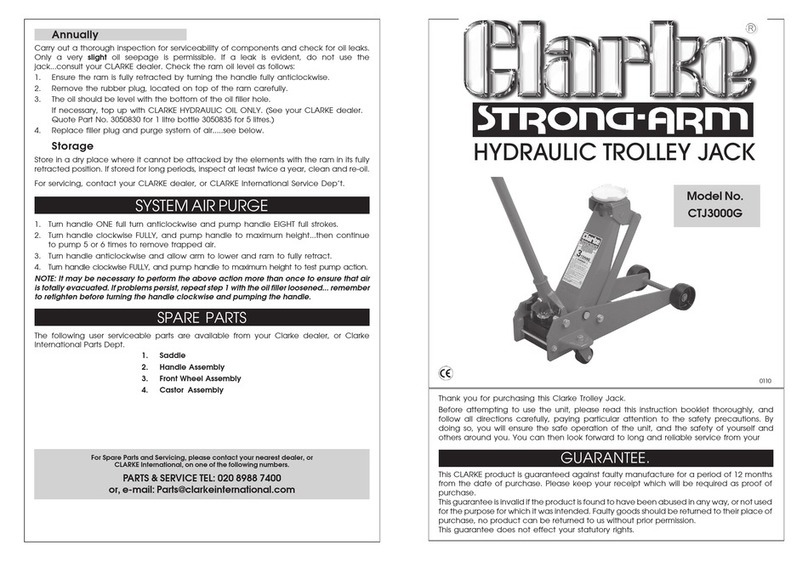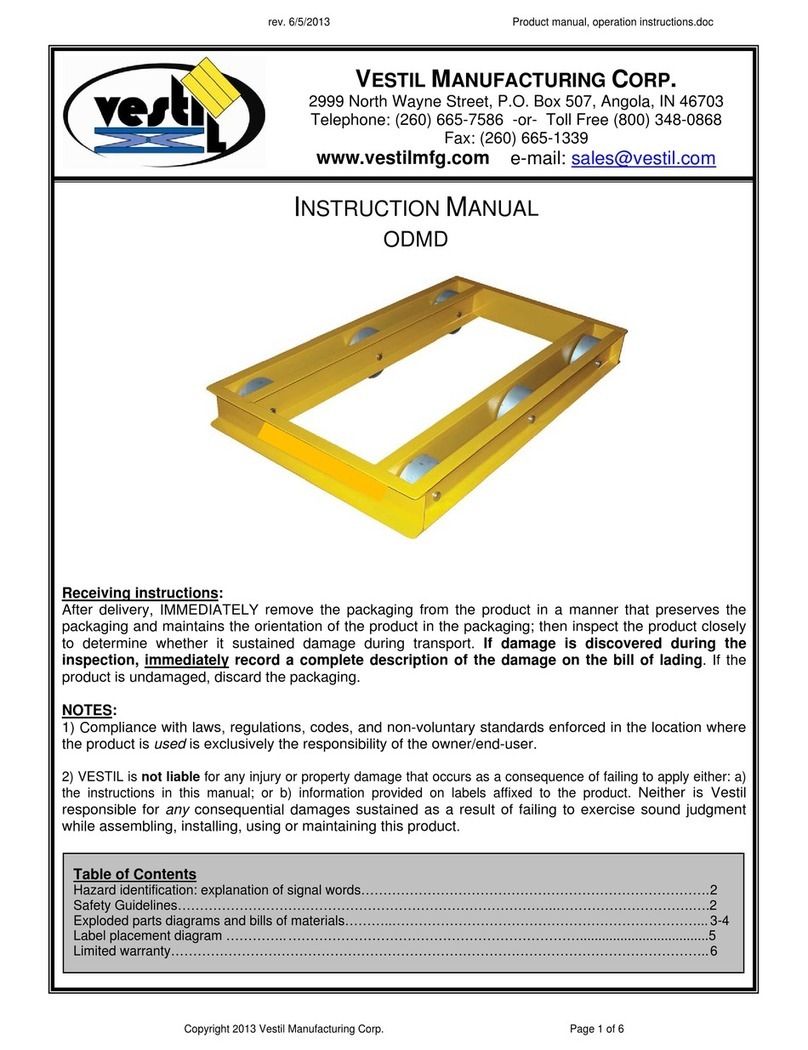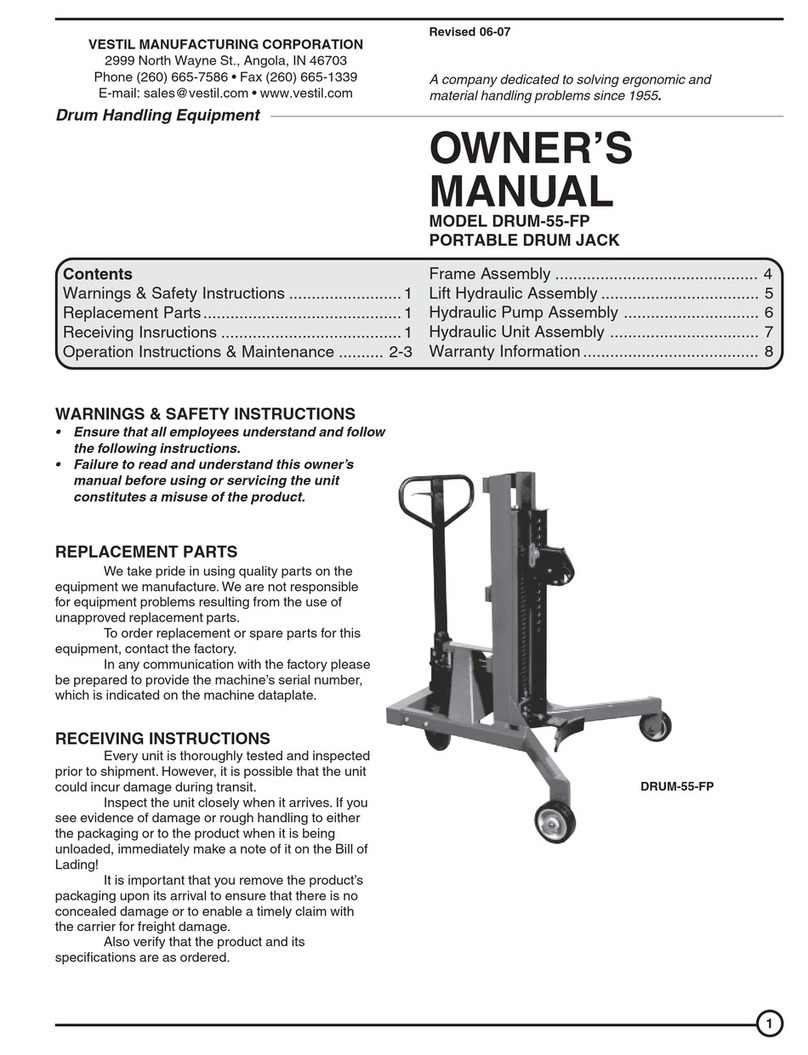
E-TUG-HD, Manual
Copyright 2021 Vestil Manufacturing Corp.
Page 10 of 15
Problem: Possible cause(s): Action:
Unit will not go forward; the belly
switch functions; reverse works.
Broken wire, or loose connection,
bad motor controller
Bad throttle assembly
Locate Pin 11 on Molex
connector at the motor controller.
Try to drive the unit in forward,
there should be 24 volts at this
pin. If there is voltage and the
unit does not move, the motor
controller may be bad. If there is
no voltage, trace the wiring back
towards the tiller head and check
voltage on each side of
connectors. Continue this until
bad connection is found.
Belly switch does not function;
forward ok; reverse ok
Broken wire, or loose connection,
bad motor controller
Bad belly switch
If the connections are all good,
and there is no voltage coming
out of throttle assembly, then the
throttle assembly may be bad.
Verify there is 24 volts going into
the assembly, and that there is a
good ground. If there is still no
output voltage for pin 11, replace
throttle assembly. Reference .
Locate Pin 13 on Molex
connector at the motor controller.
Try to drive the unit in reverse,
and hit the belly switch… there
should be 24 volts at this pin. If
there is voltage and the unit does
not move, the motor controller
may be bad. If there is no
voltage, trace the wiring back
towards the tiller head and check
voltage, or continuity on each
side of connectors. Continue this
until bad connection is found.
If the connections are all good,
and there is no voltage, then the
switch may be bad. Verify there
is 24 volts going into the switch;
and check to see if it is coming
back out of the switch when
depressed. If there is no output
voltage, replace the switch.
Unit will not move at all. Stuck Switch The belly switch is stuck on. Tap
the orange belly switch assembly
to see if the switch can be freed.
If this doesn’t work, disassemble
the tiller head by removing 3
screws from bottom. Slightly
loosen up the two screws that
hold the switch in place, this may
free the switch. If it is still stuck,
contact the factory for a
replacement switch.































